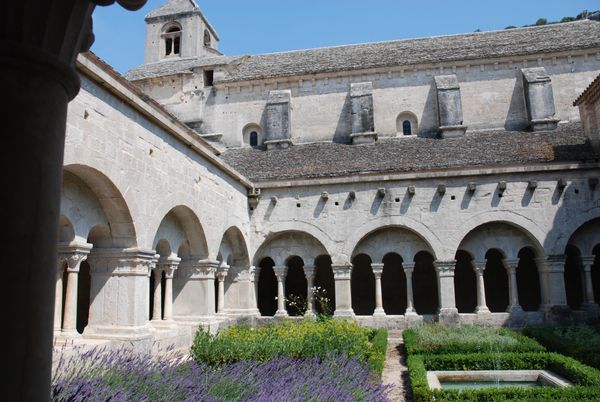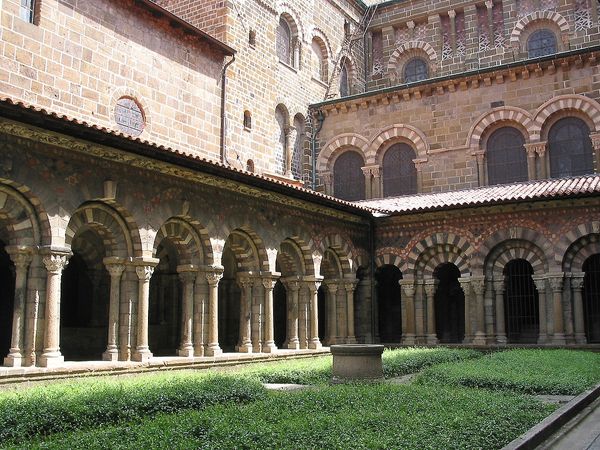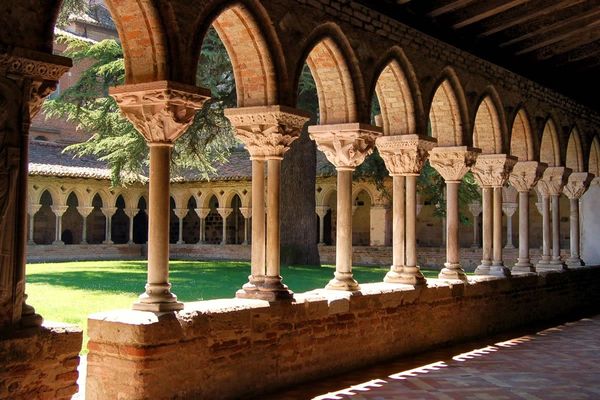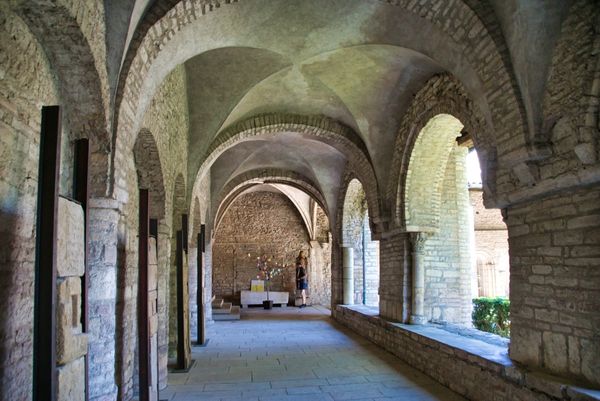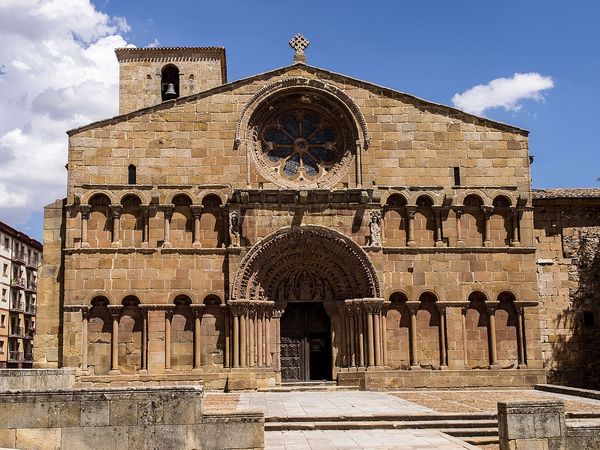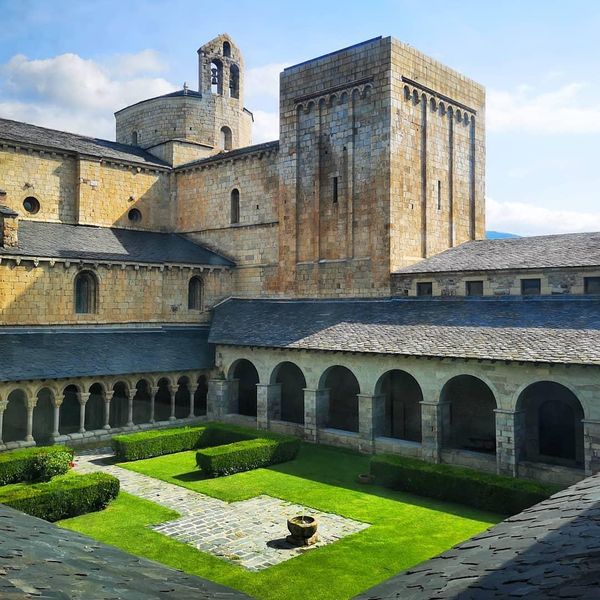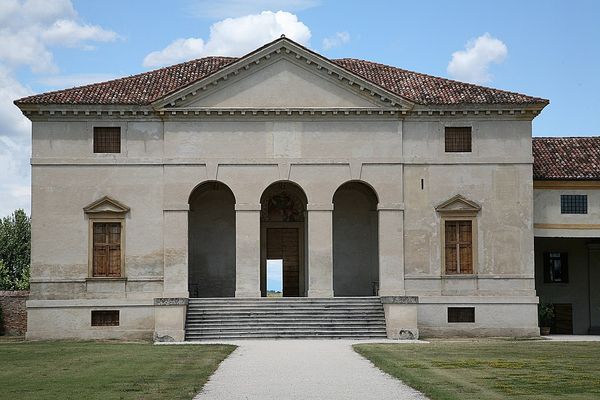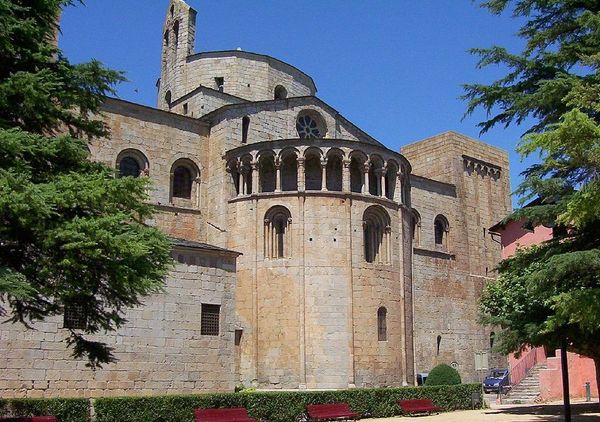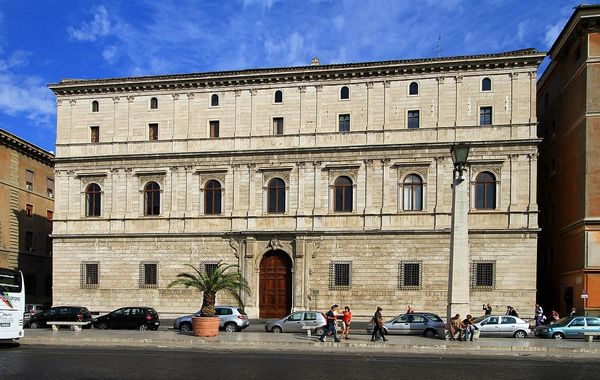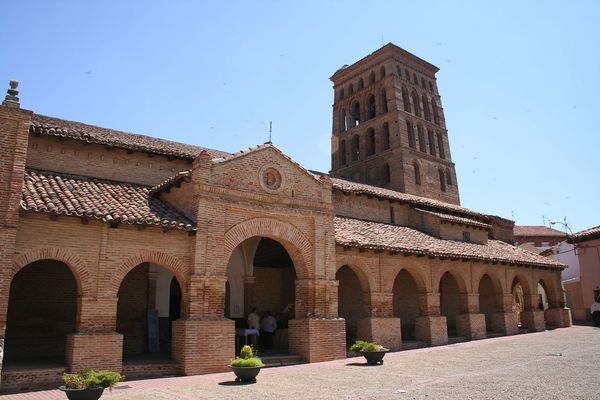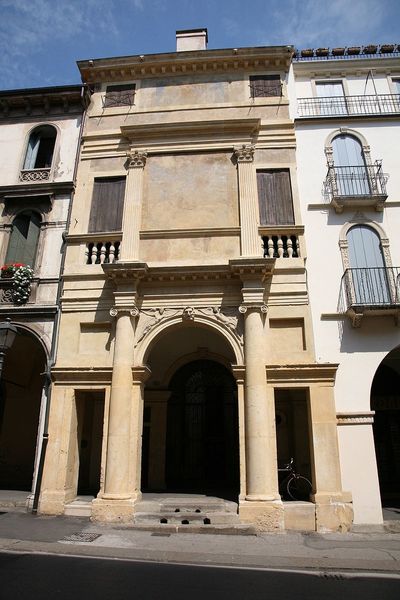
architecture
#
landscape
#
architectural photography
#
historic architecture
#
traditional architecture
#
romanesque
#
carved into stone
#
geometric
#
column
#
arch
#
architecture photography
#
architecture
#
historical building
Copyright: Public domain
Curator: This image captures the serene Cloister of the Basilica Di San Giovanni in Laterano, dating back to 1222, a testament to Romanesque architectural design. Editor: My first impression is one of tranquility—the gentle rhythm of the arches, the verdant courtyard. It feels almost suspended in time. Curator: Observe how the repeated archways establish a compelling visual cadence, underscored by the geometrically arranged columns that manifest Romanesque stylistic tenets. Notice how light and shadow play across the stone surfaces. Editor: I am struck by how the carefully cultivated nature of the courtyard contrasts with the solidity of the basilica. There’s an intentional interplay here between the built environment and the organic one. Think about what a curated sanctuary like this one represented for the monks: A refuge but also a site to exercise privilege. Curator: Consider how the architectural features, particularly the twisted columns and ornate capitals, demonstrate an interest in complexity within a strict geometric framework. They act as structural and decorative elements in equal measure. Editor: Yes, and that ornamental flourish also points to power and control. A place such as this broadcasts a very specific message about wealth, influence, and the hierarchical organization of society in the medieval period. It wasn’t built for the common citizen. Curator: Indeed, while the functionality cannot be denied, the decoration contributes to an overwhelming aesthetic experience, inviting closer visual scrutiny. It emphasizes craftsmanship. Editor: Right. We have to remember that in the 13th century, visual culture reinforced the prevailing social structure. The architecture of religious spaces was meant to communicate dominance. Curator: Reflecting on this artwork, I see a meticulous formal arrangement demonstrating sophisticated aesthetic values inherent in Romanesque architecture. Editor: From my point of view, examining this cloister brings to mind questions of social control and religious institutions and helps us consider their long shadow.
Comments
No comments
Be the first to comment and join the conversation on the ultimate creative platform.
